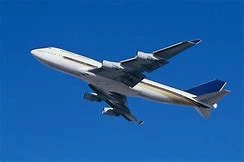Wondering the best ways to get deals on flights? So was I, so I did some research.
There are several ways to search; each airline individually, booking engines and aggregators. Let me explain. Booking agents are the best known and the ones you see advertised the most (Expedia, Priceline, Hotwire) Booking agents search your criteria directly from the airlines. Aggregators, which are lesser known, but often the better choice, go through OTA’s (online travel agencies) and compile the results. Those are the search engines who send you to a secondary site after you hit “book”.” Southwest airlines does not allow their site to be aggregated, so you should always do a secondary search with them.
Here is a brief rundown of the top ten best and worst sites for getting the best fares whether traveling domestic or international.
10. Priceline (priceline.com)
Pros: Priceline can save you around 40% on opaque fares they call “Express Deals” (Opaque fares allow you to pick your travel dates and airports, but no flight times, airlines or stopovers. If you’re a seat-of-your-pants traveler and are not concerned with the hidden fees some airlines sneak in, this could be a good savings.
Cons: They normally come in middle ground or at the back of the pack for guaranteed route prices.
9. Expedia/Travelocity/Orbitz (Expedia.com, Travelocity.com, Orbitz.com)
Pros: Services include baggage fees; fare alert emails; and shows prices for alternative dates if you are flexible enough to get the best fares.
They don’t have the lowest fares and have limited filters; Expedia now owns both Travelocity and Orbitz, so the result will be the same on all three sites.
8. Hotwire (hotwire.com)
Pros: Services include baggage fees; fare alert emails; and shows prices for alternative dates
Cons: They have done away with their opaque fares “Hot Rates”; they have limited filters; and mostly have average to poor fare results.
7. Seatguru (Seatguru.com)
Pros: Seatguru gave detailed information on fees and flight amenities (or lack of); they provided shortcut options for cheapest/shortest/and nonstop flights.
Cons: They didn’t come in with the lowest fares; the site is not as user-friendly as it could be.
6. CheapOAir (CheapOAir.com)
CheapOAir is an OTA site and had the best prices on last-minute international fares; they offered vacation package options; offered a seat-selection map for US carriers; had opaque fares.
Cons: With the exception of last-minute international travel deals, they rarely found the best price.
5. Hipmunk (Hipmunk.com)
Pros: Very user friendly; they offer email price alerts; they provide vacation packages and include Amtrak travel deals.
Cons: Fail to find the cheapest prices.
4. Kayak (Kayak.com) Probably the most well-known aggregator.
Pros: They offer price alerts; they have a clear flexible dates grid to get the best fares; vacation packages; they also offer “buy now” or “wait” advice based on trends which is a helpful tool; and they include Amtrak
Cons: Not great with secondary cities or multi stop itineraries.
3. Google (Google.com/flight)
Pros: They are great at finding fares fastest; they have a handy calendar of prices; offer detailed filters; they have the capability of including or excluding certain airlines or airports; have a complete list of in-flight amenities (personal outlets, in-flight entertainment, wifi, etc.)
Cons: Occasionally have poor results.
2. Skyscanner (skyscanner.com)
Pros: Among the best at find the best deals; offers a month calendar of fares for flexible dates; fare alert emails; finds the best deals rom your departure airport with their “everywhere” feature.
Cons: Not quite as good as some on direct flights.
And my #1 choice. Momondo (momondo.com)
Hands down has the most consistent best fares.
Is more of a basic site with fewer bells and whistles than the #2 and #3 picks.

